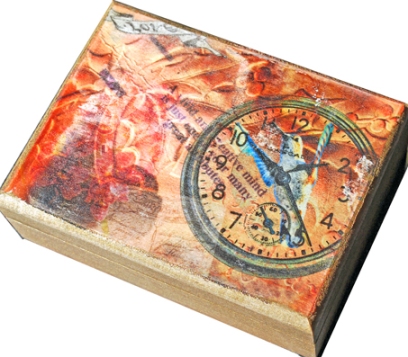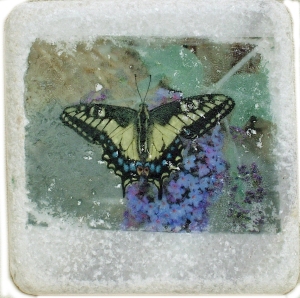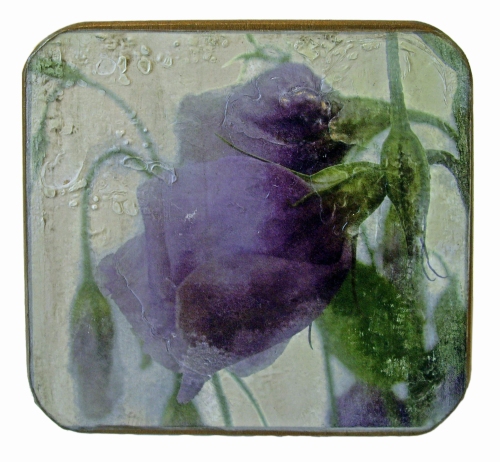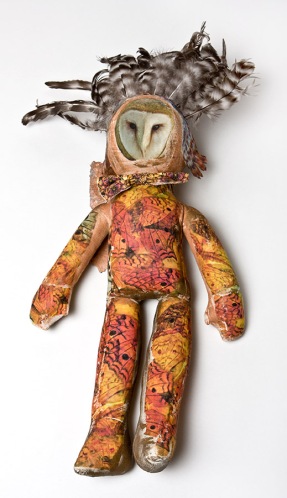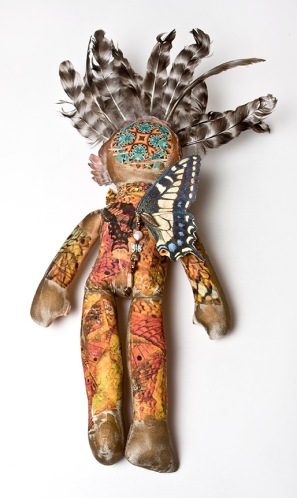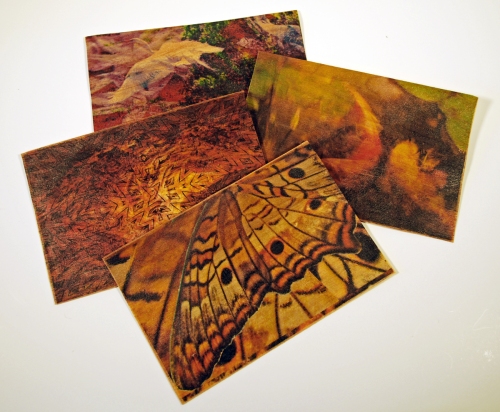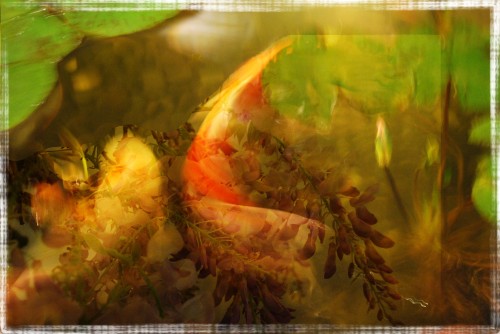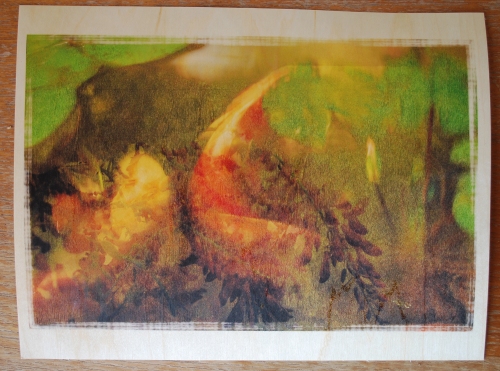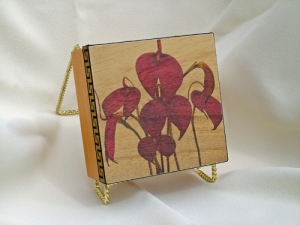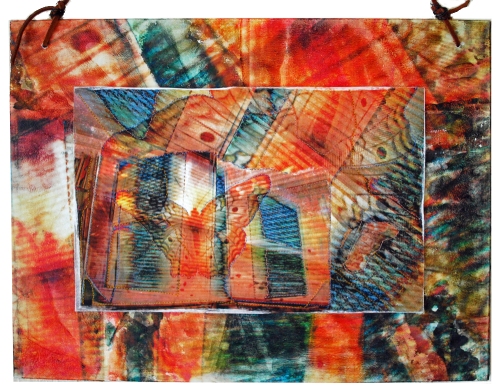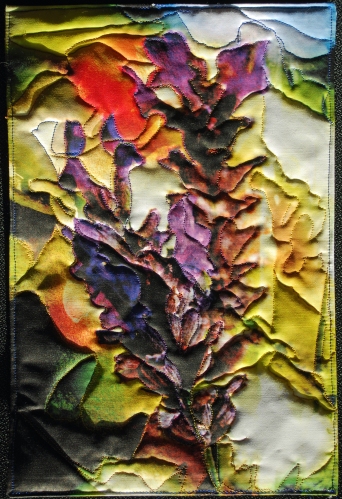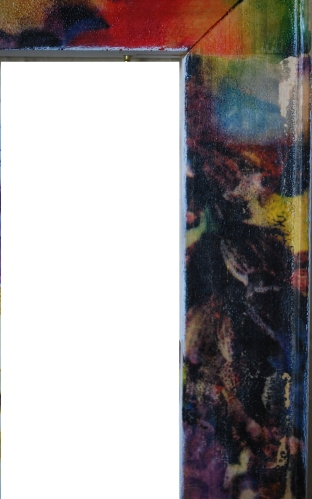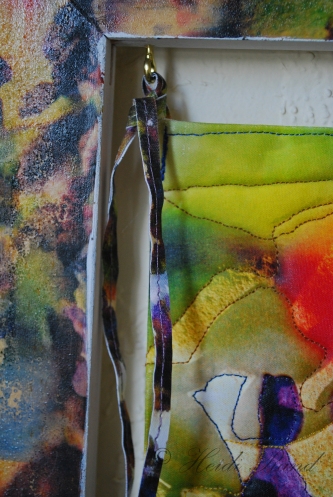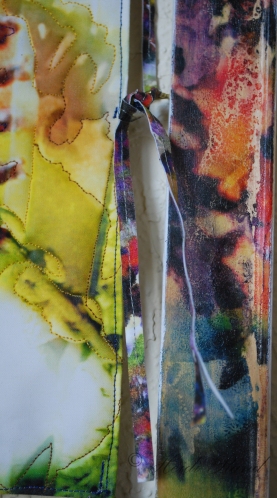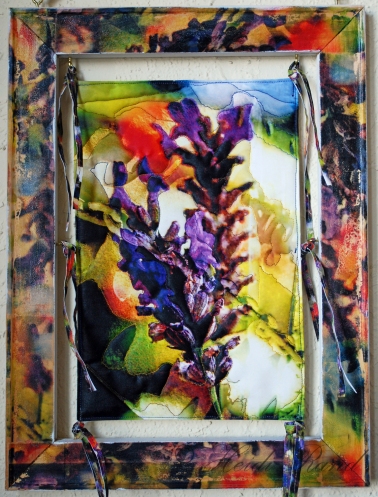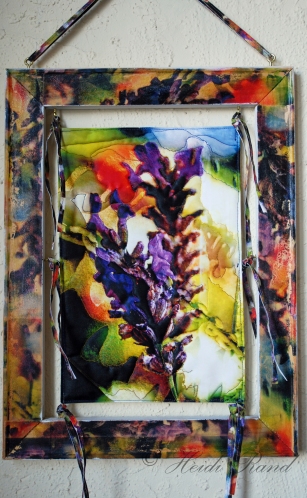I previously wrote in my post about Photos on Wooden Boxes about using Lesley Riley’s new Transfer Artist Paper (TAP), available from her at http://www.transferartist.com I just tried TAP on fabric. I have resisted making t-shirts to sell because I was never sure whether the iron-on transfers would last, how they would wash, etc. I have ordered some t-shirts made with my designs through my zazzle shop, http://www.zazzle.com/GardenDelightsArts* and the shirts are great. They have a large variety of shirt styles and sizes. I even sold a couple of children’t t-shirts the other day at the Pinole Artisan Gallery, so hooray for that! Anyway, I bought some blank onesies (infant garments that snap at the bottom, very cute even to those of us who are childless) and decided to either sew some of my designs onto them, or to try using iron-ons. Since I wanted to test out the TAP transfers anyway, I decided to use them for some of the onesies.
Printing: I reversed the images because they’re transfers and you have to place them face down on the surface, of course. I printed them with my Epson 2400, using Ultrachrome inks. Per Lesley’s instructions, I printed on the plain paper setting and the medium quality. The prints looked great – just as good as they would on normal inkjet paper, with full color saturation and detail.
Lesley’s website says to either wash the fabric right away (after transferring), in which case the colors will likely fade, or to wait a couple of days, and possibly the colors will fade less. At least that’s how I read her instructions. She also mentions that when she waited a couple of days, there was a line through the image where the cloth folded during washing.
I pre-washed and machine dried the onesies. I printed 6 images on 2 sheets of the TAP paper. Following Lesley’s instructions, I cut out the image close to the edge to avoid having excess polymer transfer to the fabric. I set my iron to the cotton setting. As instructed, I used my ironing board which has a thin pad. I put a piece of parchment paper on top the TAP transfer and placed my iron on top of it. I held it there for about 10 seconds without moving it. Then I peeled up an edge of the paper, saw that the entire transfer had worked, and peeled the backing entirely off.
On a couple of the transfers the edges were a little rough. I think that’s because I didn’t hold the iron in that spot long enough, and the transfer was a bit incomplete. My fault, but nothing that will affect the finished shirt too badly. I was surprised that the holes in the iron didn’t cause a problem. Lesley mentions that the holes MAY leave untransferred spots, and I’d assume they would — but I did pick up the iron and place it in different spots, so maybe that’s why I didn’t have a problem.
The transfers aren’t too stiff, just a tiny bit, but Lesley says that the stiffness will decrease as the item is washed. I decided to wait until maybe tomorrow to wash them. I really like the saturated colors and don’t want them to fade too much. Here’s a photo of one of them taken right after I did the transfer:

Lars, photographic transfer to cotton using TAP paper
I was very impressed that the shades of grey throughout the photo were transferred, as were the vivid colors of Lars’ eyes and ears, and his collar. I’ll let you know what happens after I wash and dry the onesies tomorrow.
Okay. I machine-washed and dried the onesies. Consistent with Lesley’s results, the transfer faded a bit, and the hand is a bit less stiff. The colors are acceptable, and I would feel confident selling items I made with the TAP paper. I’ll continue to test them. I’ll make a t-shirt for myself and see how it fares after normal wear and washing. Here’s the onesie with Lars on it, after washing and drying:

Transfer with TAP, after washing
